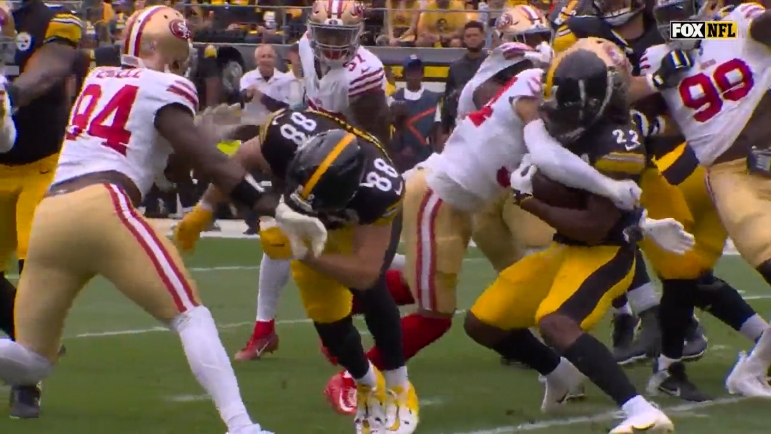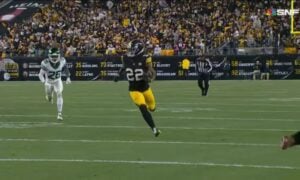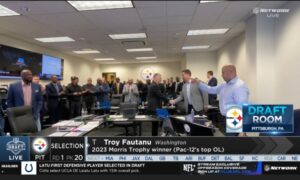The Pittsburgh Steelers’ ground game could certainly use a spark anytime soon. While there have been some glimpses of better days to come, and last week’s efforts were overall an improvement on the weeks before, there is much left to be desired.
The need for improved blocking, scheming, and, you know, running the football are all part of the equation. But for RB Najee Harris, it’s also about how defenses have been playing the Steelers based on their resume from the second half of last season, as well as on how the San Francisco 49ers successfully defended them in the opener.
Asked if he feels the Steelers have faced more downhill attacking linebackers against the run this year than normal, he said via the team’s website, “Of course. First two games alone, the d-linemen were jetting and then the linebackers would jet downfield, too, just all to stop the run”.
To be clear, he’s not referring to box counts here or anything like that. What he is talking about is the level of aggressiveness with which the front seven, particularly the middle linebackers, have been attacking the line of scrimmage on run downs.
While numbers from sources such as Next Gen Stats do indicate that the Steelers have not faced a lot of “stacked boxes”, defined as eight or more defenders in the box before the snap, the post-snap picture can look rather different.
Defenses have played them with safeties coming down post-snap, and there has been an aggressive tendency regarding how they have defended the run. Some of that would have to do with picking up on keys that indicate a run play, but there’s also truth in Harris’ interpretation, no doubt.
“The Browns did it, too. I think they saw the film of what the Niners did, and they were just jetting gaps”, he said. “All the double-team blocks, they were just splitting them, because they saw that was probably a way to stop the run. But it’s football, we’ve got to try to find ways to combat that”.
A good place to start is by either taking better box counts or making better adjustments in response to those counts. There are still too many plays being run into unfavorable schematic numbers, with more defenders than there are blockers to get the run off and past the line of scrimmage.
Regardless of what this or that data point might say, one thing our eyes have definitely told us is that the running backs are being contacted in the backfield far too frequently. It says a lot that Harris’ second-best run of the season so far was on a reverse-field cutback after he was bottled up, making something out of nothing.








